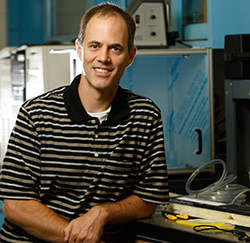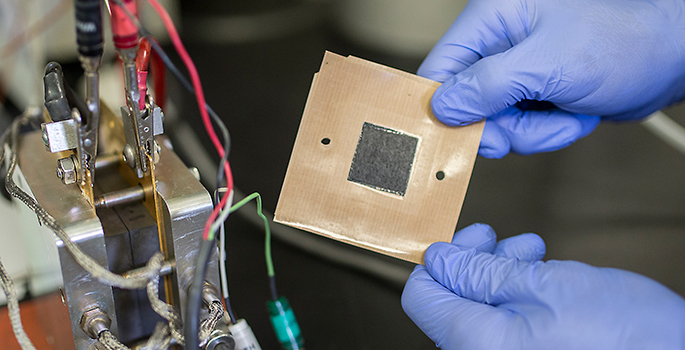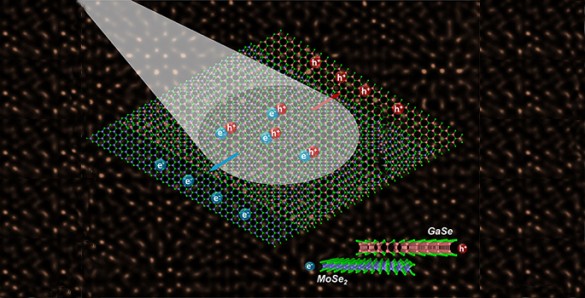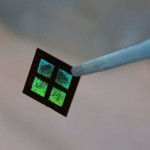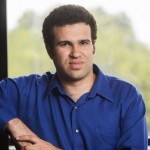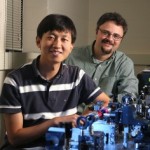‘VINSE Faculty News’
Associate Professor of Physics Kalman Varga has been elected fellow of the American Physical Society.
Oct. 18, 2016—Stevenson Professor of Physics Keivan Stassun and Associate Professor of Physics Kalman Varga have been elected fellows of the American Physical Society. The fellowship is considered a prestigious recognition from their professional peers. The criterion for election is exceptional contributions to the physics enterprise, such as outstanding physics research, important applications of physics, leadership in...
Duvall earns spot on CMBE journal’s 2016 Young Investigators list
Aug. 19, 2016—Cellular and Molecular Bioengineering, a journal of the Biomedical Engineering Society, has named Associate Professor of Biomedical Engineering and Director of Graduate Recruiting in Biomedical Engineering Craig Duvall to its third annual list of Young Innovators of Cellular and Molecular Bioengineering. Selection was a competitive process that began with nominations and included biosketches and abstracts...
Greg Walker named ASME Fellow
Aug. 17, 2016—Greg Walker, associate professor of mechanical engineering, has been selected to be a fellow of the American Society of Mechanical Engineers for “exceptional engineering achievements and contributions to the engineering profession.” Walker is one of approximately 3,000 fellows chosen from among more than 130,000 ASME members. Associate Professor Greg Walker Cited by the ASME, Walker’s...
Using nanotechnology to give fuel cells more oomph
Aug. 8, 2016—At the same time Honda and Toyota are introducing fuel cell cars to the U.S. market, a team of researchers from Vanderbilt University, Nissan North America and Georgia Institute of Technology have teamed up to create a new technology designed to give fuel cells more oomph. The project is part of a $13 million Department...
Advance in creating atomically thin electronic and optical devices
Apr. 15, 2016—A future generation of atomically thin optoelectronics devices, including transistors, photodetectors and solar cells, is a step closer because of an advance in the art of epitaxy made by scientists at Oak Ridge National Laboratory (ORNL) with an assist from a pair of Vanderbilt physicists. Epitaxy, the process of growing layers of crystalline film on...
John Wilson receives NSF Career Award
Apr. 5, 2016—John T. Wilson, assistant professor of chemical and biomolecular engineering, has received a National Science Foundation Faculty Early Career Development award. The five-year, $500,000 grant – Engineering Polymeric Nanomaterials for Programming Innate Immunity – will allow Wilson to develop new synthetic materials for “encoding” immunological messages and tightly regulating their delivery to the organs, cells,...
How to make electric vehicles that actually reduce carbon
Mar. 3, 2016—An interdisciplinary team of scientists has worked out a way to make electric vehicles that only are not only carbon neutral but carbon negative, capable of actually reducing the amount of atmospheric carbon dioxide as they operate. They have done so by demonstrating how the graphite electrodes used in the lithium-ion batteries that power electric...
Dr. William Fissell’s Artificial Kidney
Feb. 15, 2016—Vanderbilt University Medical Center nephrologist and Associate Professor of Medicine Dr. William H. Fissell IV, is making major progress on a first-of-its kind device to free kidney patients from dialysis. He is building an implantable artificial kidney with microchip filters and living kidney cells that will be powered by a patient’s own heart. We are creating...
Cotton candy machines may hold key for making artificial organs
Feb. 11, 2016—Cotton candy machines may hold the key for making life-sized artificial livers, kidneys, bones and other essential organs. For several years, Leon Bellan, assistant professor of mechanical engineering at Vanderbilt University, has been tinkering with cotton candy machines, getting them to spin out networks of tiny threads comparable in size, density and complexity to the patterns...
Valentine featured on Phys.org and Vanderbilt Research News
Sep. 24, 2015—VINSE member Jason Valentine’s work published in Nature Communications was featured in Phys.org and Research News @ Vanderbilt 09/22/2015 “First circularly polarized light detector on a silicon chip” Invention of the first integrated circularly polarized light detector on a silicon chip opens the door for development of small, portable sensors that could expand the use...



